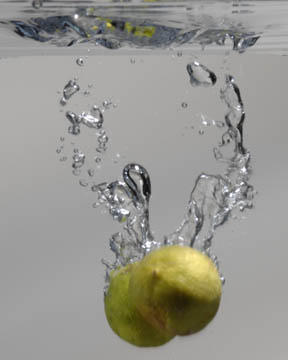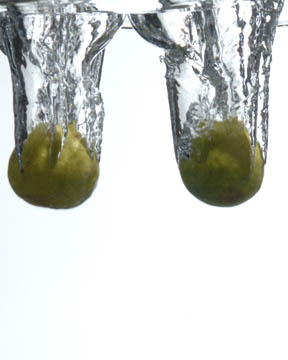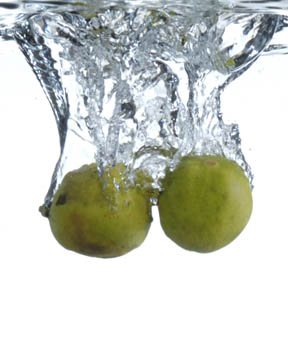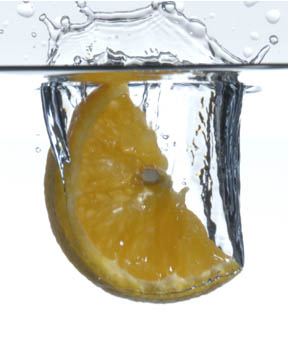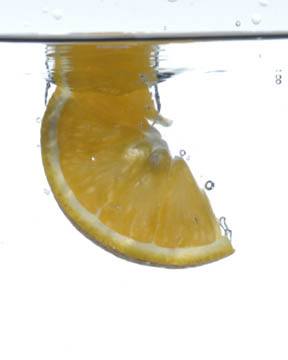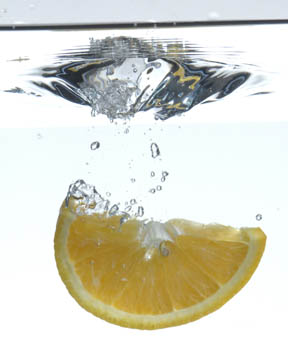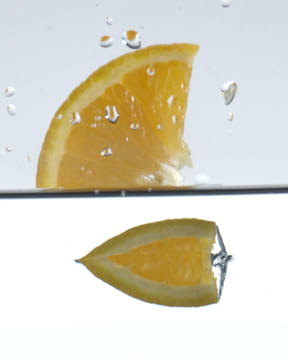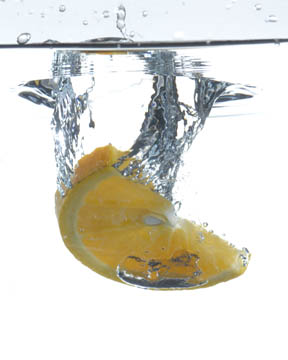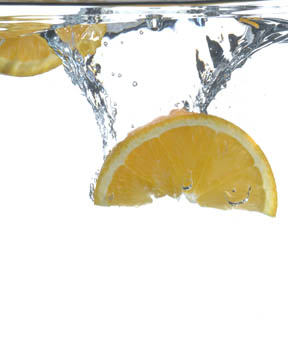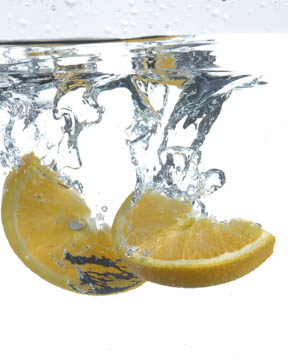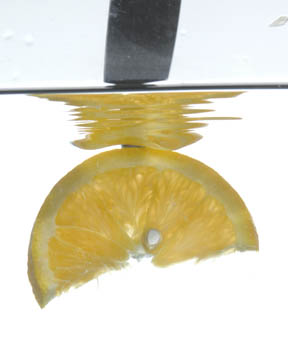Food photography special effect - fruit splash (how-to)Professional Food photographer tells you, step by step, how he created this shot. Learn photography lessons that you can use to become a better photographer. |
|||||||||
 |
Return again soon for more lessons in food photography. |
||||||||
| Every once in a while I get a project that is a little out of the ordinary, and this is one of them. Even though I am a food photographer, I consider this shot to be more in the realm of special effects than anything else. | |||||||||
|
|
|||||||||
|
Photographic special effect My client comes to me with a layout, or rather other professional food photographer’s samples and say that thy want to do something like this. The product we are shooting for is flavored water, which is a private label grocery store brand. The photo we are to do is for the packaging of the product in both six and twelve pack cartons. We weren’t shooting just one flavor either, we would be photographing five different flavors. I’ve seen shots like this a hundred times in the trade publications and in various source books like the black book and the work book. These types of shots always interested me, but I never found the opportunity to do one myself. I figured that the two hardest things about the shot would be getting my strobe fast enough to stop the motion and timing the fruit fall. Years ago I remember a friend of mine having some kind of beam splitter that I thought I could borrow, so I thought had that covered. I own four different kind of Norman packs, so I thought between all of them, with a little testing, I could find one fast enough to stop the motion. After a phone call and a bunch of testing, I came up short on both counts. My buddy has since gotten rid of his splitter and all my Norman packs gave me slightly blurry motion in all my tests. |
|||||||||
|
|||||||||
|
|||||||||
|
The budget for this photography shoot really didn’t leave much room for renting strobe stuff from NY, so I started making calls and this is what I learned. 1, I was totally out of luck when it came to the timing issue. There was a company that once sold something that might of helped out a bit, they discontinued they’re distribution a couple years ago. This didn’t worry me all that much. During my testing, I was having sore pretty good luck with the timing. There seemed to be so many happy accidents happening, that repeatability would probably be hindrance to coming up with something interesting. So in the end, it was just a matter of shooting LOTS of shots, trying different things. Thank GOD for digital. I could have never afforded to do this if I were using film. 2. I made a bunch of calls to friends and strobe rental dealers to pick their brains about the duration of flash issue. Even though Norman wasn’t really known for this attribute, I tried all my packs. None of them did very well. During one of my calls, a friend of mine suggested that I split the lowest power down by as many heads as possible. He said it was like putting as many holes as possible in a bucket order to drain it as fast as possible. The faster you could drain the power from the strobe, the shorter time that strobe would be on. So I gave it a crack and it worked. Well, it worked kind of ok. I think I was just on the verge of sharpness, but it would have to do. I guess that there are strobes better suited to this job, but I couldn’t easily get my hands on one when I needed it. Profoto and Elinchrom seemed to be the two front-runners when it comes to “quick” flashes. Keep that in mind if you ever try this kind of shot. Another suggestion made by a friend was to use hand-held strobes. I almost went to this as a last resort, but I didn’t have enough to light the set the way I needed to. Still, hand-held strobes are fast. |
|||||||||
|
|||||||||
|
Camera – Nikon D2x (I have camera with a MUCH bigger file size, but since the reproduction was not all that demanding, I choose this camera for the “ease of use factor”. It was important that the camera be as easy to use and responsive as possible. Much of the testing was done with one hand on the cable release and one hand hanging over the aquarium.) Lens – Nikon 100 macro – (for obvious reasons.) ISO - 200 (needed a little speen for the depth of field) Shutter speed – 1 / 160 (which really didn’t matter because the real issue was “duration of flash” speed.) Aperture – f 14 (I needed a decent amount of depth of field because there were going to be some variables in where the fruit was going to be dropped. Even though I was looking for “happy accidents”, I thought good focus would be important no matter what.) Strobe – Norman P4000 (200 watt seconds split between five heads – This was probably the biggest thing I learned through all this. The more you split the power of a pack, the quicker the ”duration of flash”, or the ability to stop motion.) Reflectors - 5 inch reflectors with no type of diffusion, box or umbrella (Most people think that you have to use soft boxes, but I prefer to use smaller light sources when possible. This is especially true when the subject is so small. Think about it, that five inch reflector is pretty darn large compared to the itty bitty fruit slice, right? Set - 10 Gallon aquarium ($11.00) filled with 5 gallons of polar water. I used polar water because I knew from my tropical fish days that when you filled up an aquarium with tap water, you end up with horizontal rows of little bubbles from all the gasses in our tap water. All together, I used 20 gallons of bottled water. Background – Shite foam core. (The background was placed two feet behind subject and two of my five lights were used to light the background. Misc. – My favorite image was actually from my test shots. Notice the blue edges on the water spout. I have no freakin idea where that came from. But I really liked it. For the client’s shots, I hung blue wrapping paper down behind / to the sides of the aquarium to enhance that effect. |
|||||||||
|
|||||||||
|
The final image is actually turned upside down from reality. When we were looking trough the test shots, we noticed this image and just for the fun-of-it, I flipped the image over and really loved it that way. It just goes to show you what can happen when you just “show up” and keep you eyes open for happy accidents. |
|||||||||
|
|||||||||
© Michael Ray 2007

